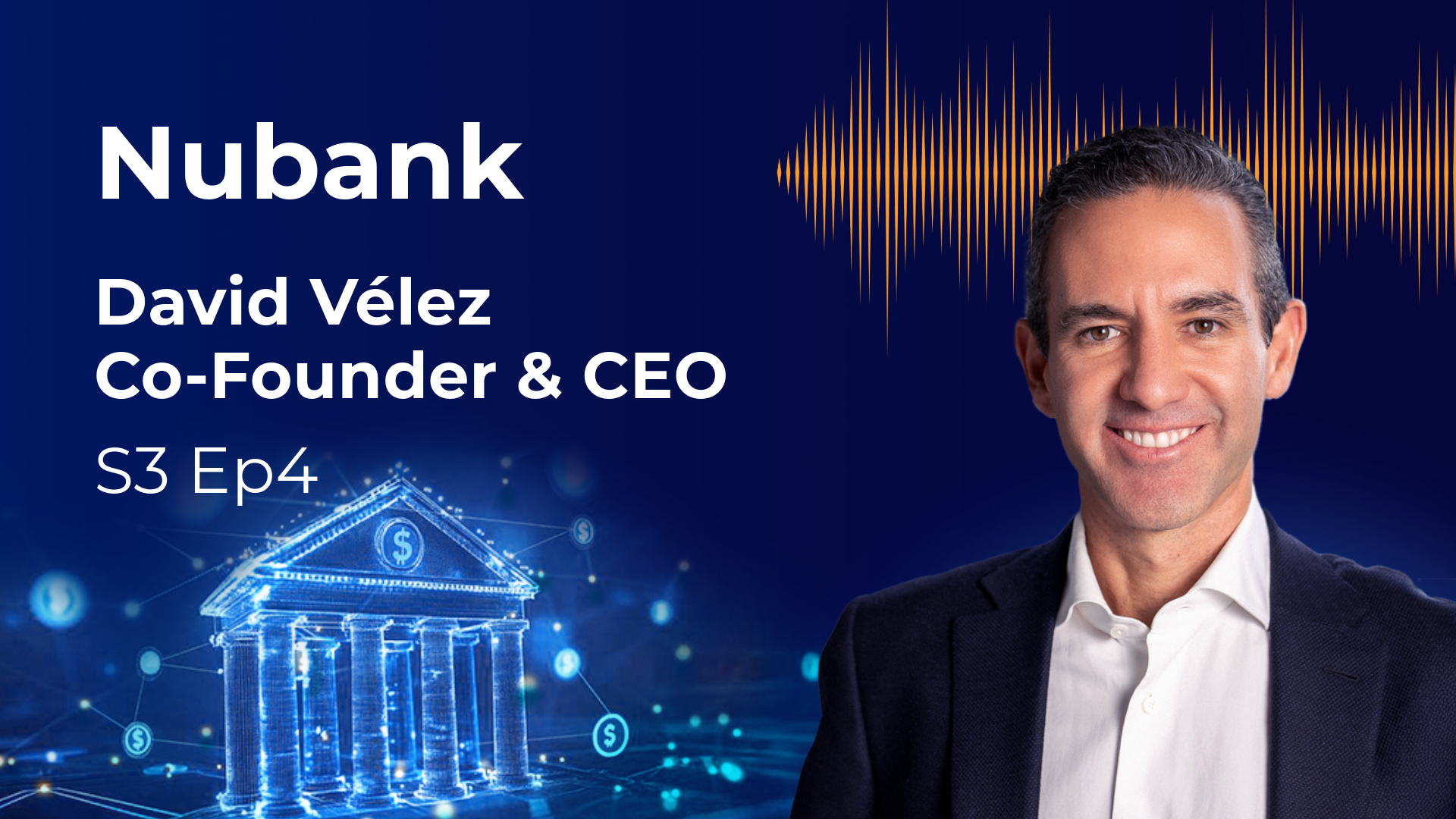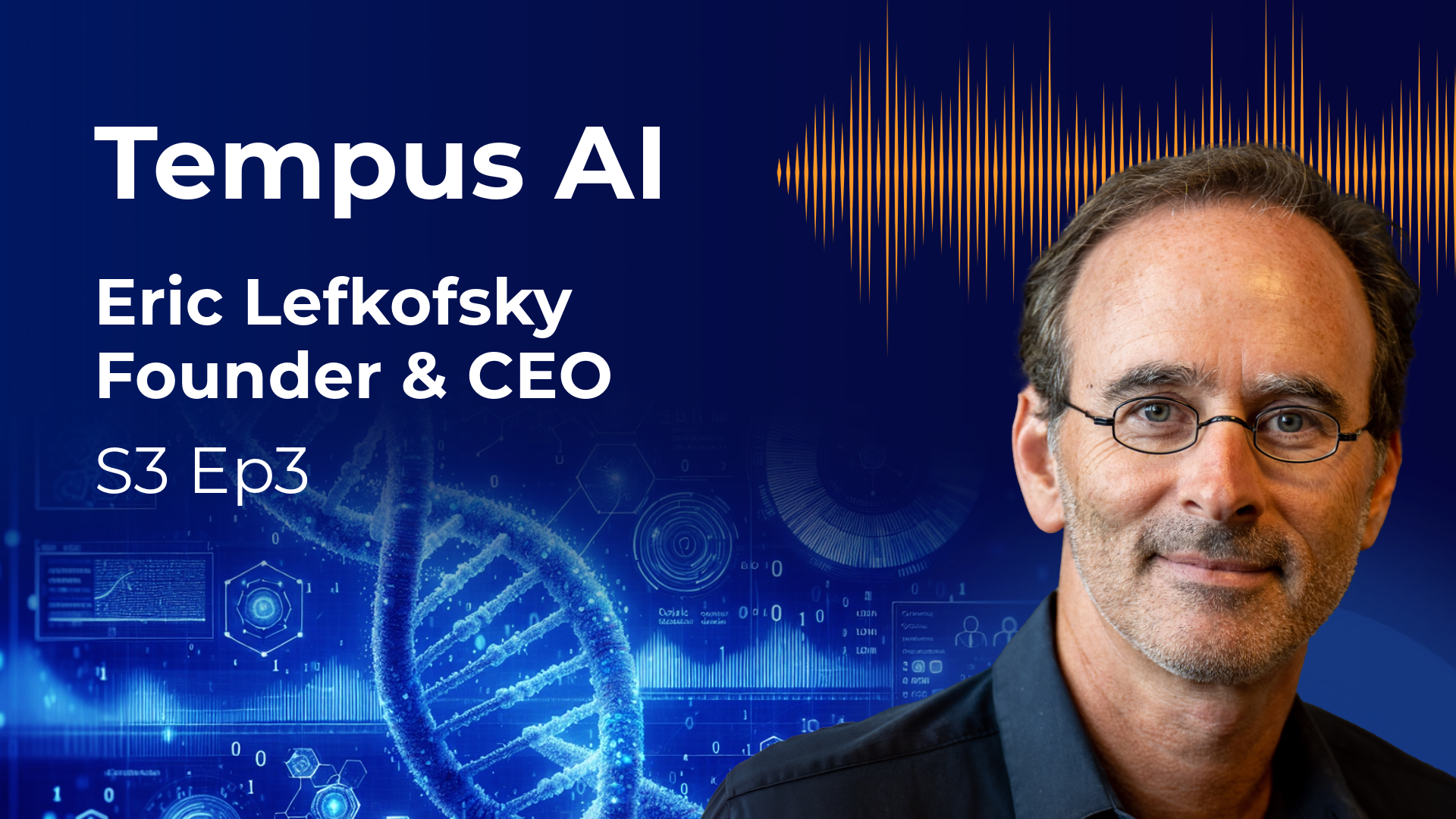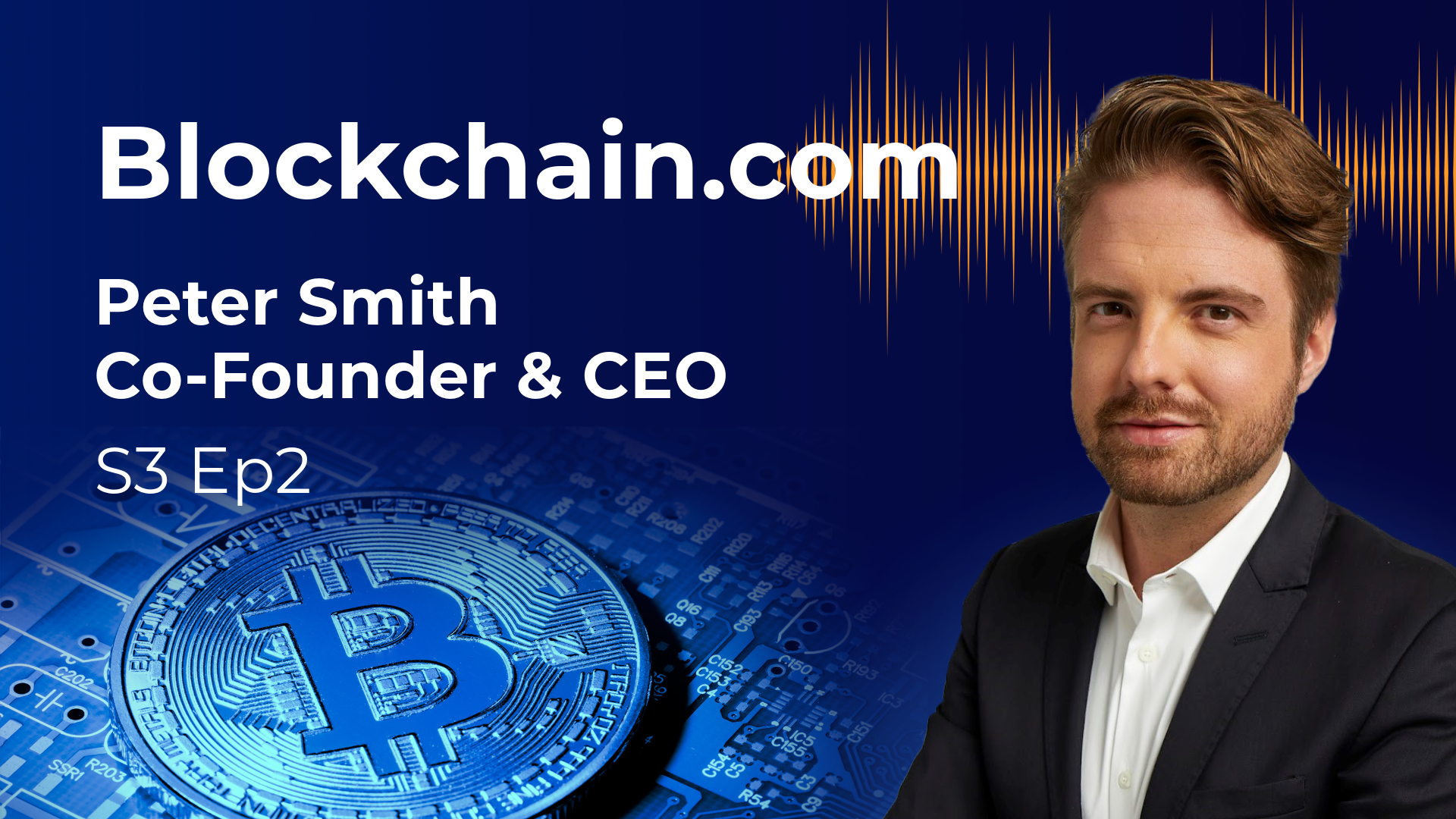September 2023
Article
4 minutes
Innovation and growth march to their own drumbeat
Tom Slater – Manager, Scottish Mortgage
Key Points
- From lightbulbs to generative artificial intelligence, technological progress often powers greater prosperity
- As time passes, falling costs and additional capabilities help companies and individuals use innovations to greater effect
- By combining innovations in different ways, companies can create new products and deliver for their shareholders
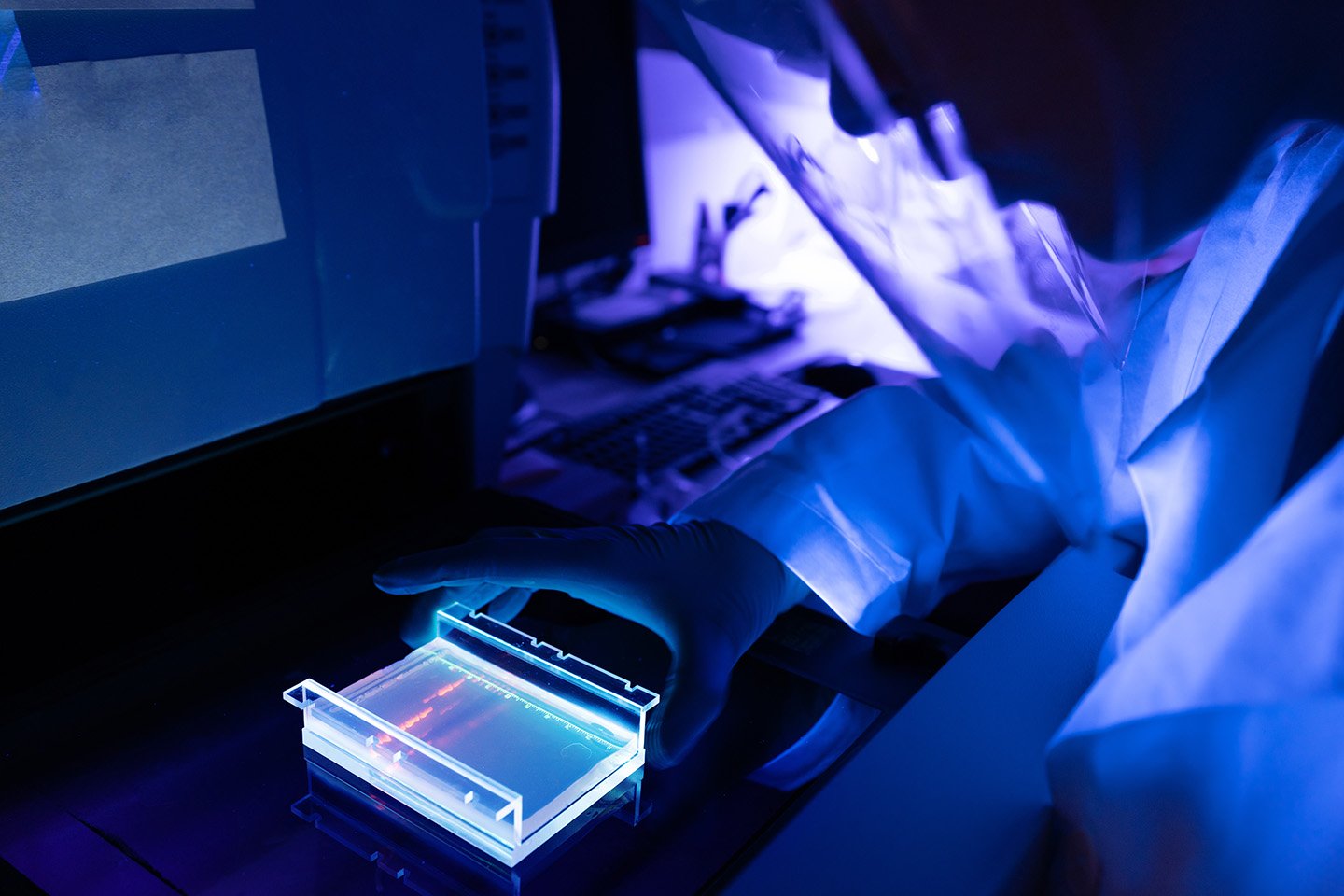
Modern genome sequencing labs rely on decades of advances in computing, automation and DNA analysis.
As with any investment, your capital is at risk.
Innovators draw on past discoveries to develop their ideas. Then companies combine them to create new products.
Take Moderna’s mRNA vaccines. The firm pioneered a way to teach cells to trigger an immune response by building on earlier work. And it relies on genomic sequencing, cloud computing and other technologies to engineer its treatments for Covid, cancer and other diseases.
Each technological breakthrough unlocks a multitude of novel combinations, strengthening the drumbeat of innovation. And that drumbeat also benefits from the fact that some technologies advance exponentially.
For example, a regular doubling of computing power helped drive progress over the past 60 years. And artificial intelligence’s accelerated pace of development holds promise for the decades ahead. Adoption rates also appear to be speeding up, as evidenced by the ChatGPT chatbot amassing 100 million users in just two months.
Innovation’s drumbeat didn’t result from low interest rates or cheap money, and it will continue regardless of current economic gyrations. Over the long term, this should lead to productivity gains and economic growth. Scottish Mortgage seeks to fill its portfolio with companies that either will gain sustainable advantage from innovation-led change or have assets that will rise in value as a result.
Technologies scale over time
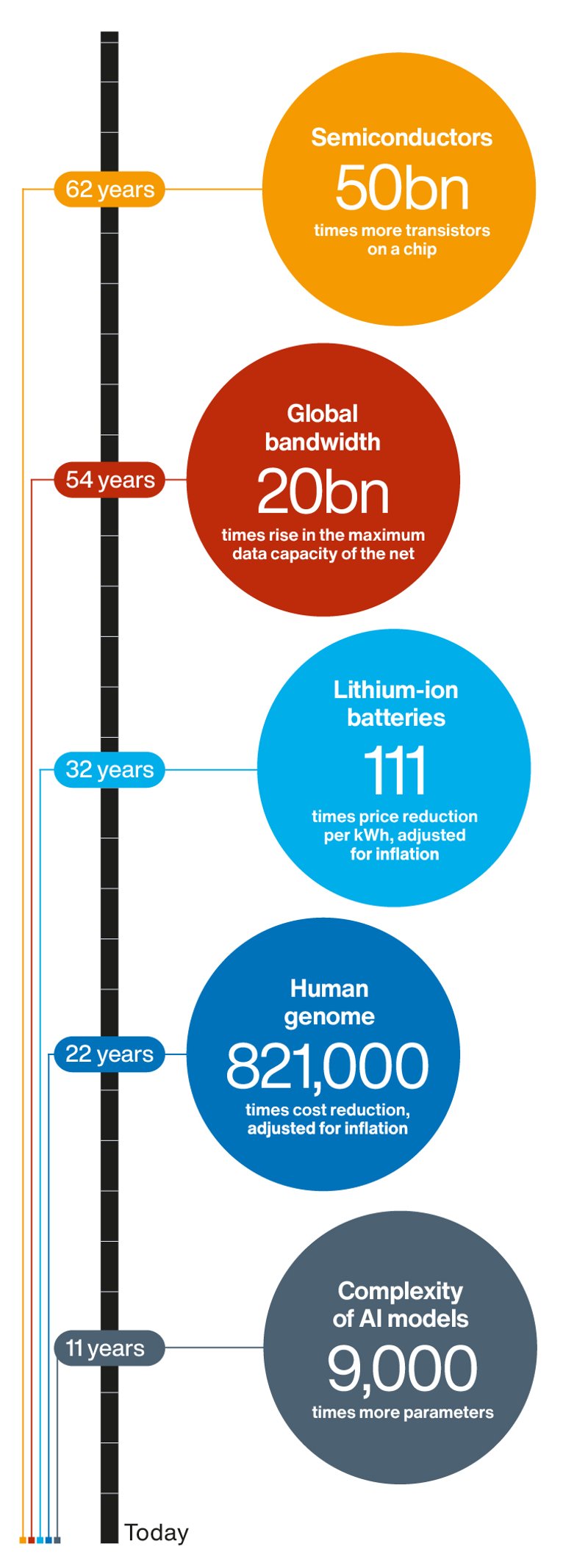
Semiconductors
1961: Fairchild microchip had four transistors
2023: NVIDIA GH200 Grace Hopper super chip has 200bn transistors
Global bandwidth
1969: Internet’s precursor ARPANET was initially limited to 50 kilobits per second of capacity
2023: Internet bandwidth reaches 997 terabits per second
Lithium-ion batteries
1991: First commercial li-ion battery cost $7,523 per kWh
2023: Li-ion batteries cost $152 per kWh
Human genome
2001: It cost $95m to sequence one human genome
2023: Illumina’s NovaSeq X sequences human genome for $200
Complexity of AI models
2012: AlexNet image recognition model had 60m parameters (variables controlling its behaviour)
2023: Google’s PaLM model has 540bn parameters
Sources: Alphabet, BloombergNEF, computerhistory.org, Illumina, NVIDIA, Our World In Data, Telegeography.
The alchemy of innovation
How some of our portfolio companies combine technologies
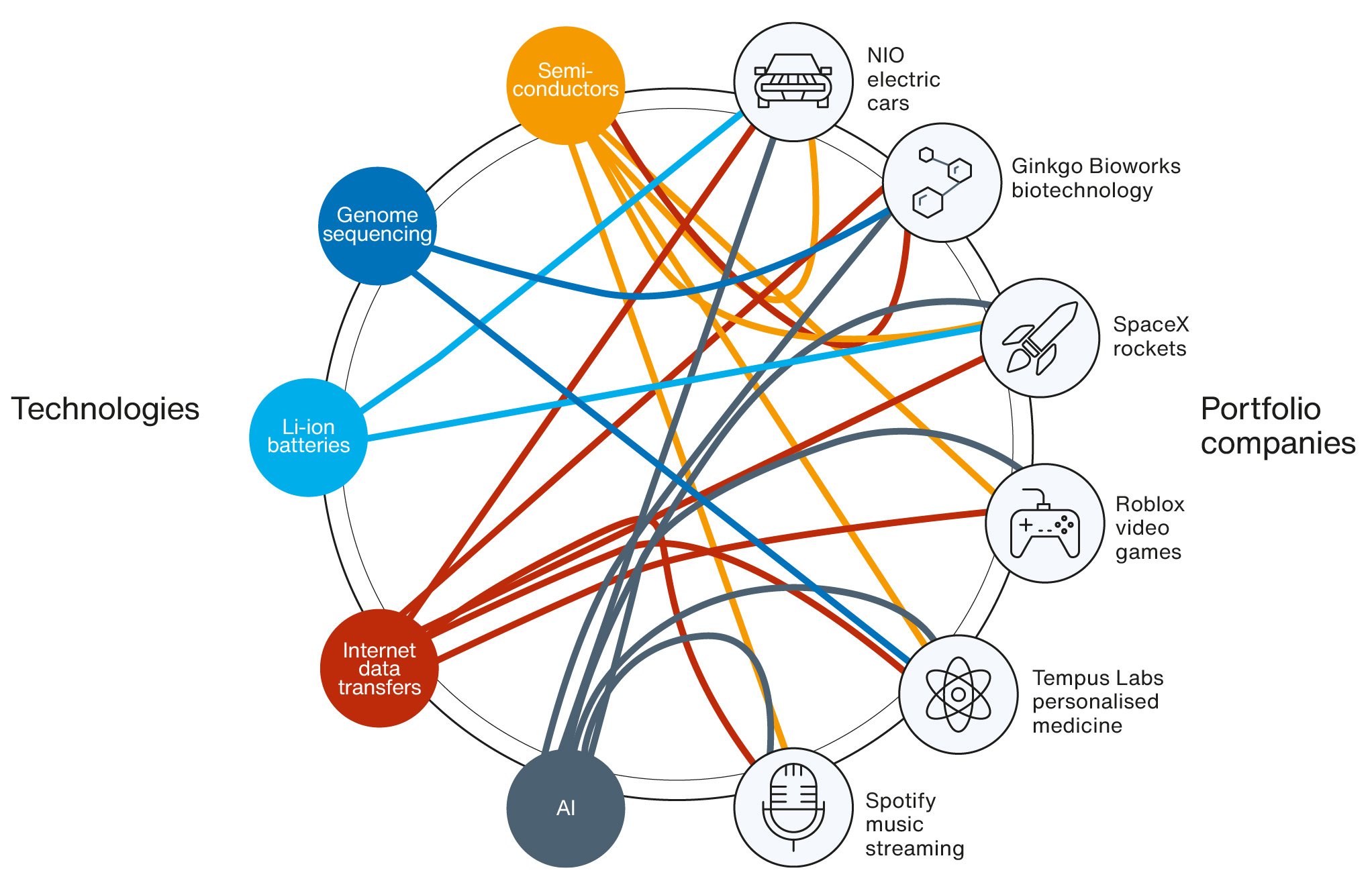
Progress powers prosperity
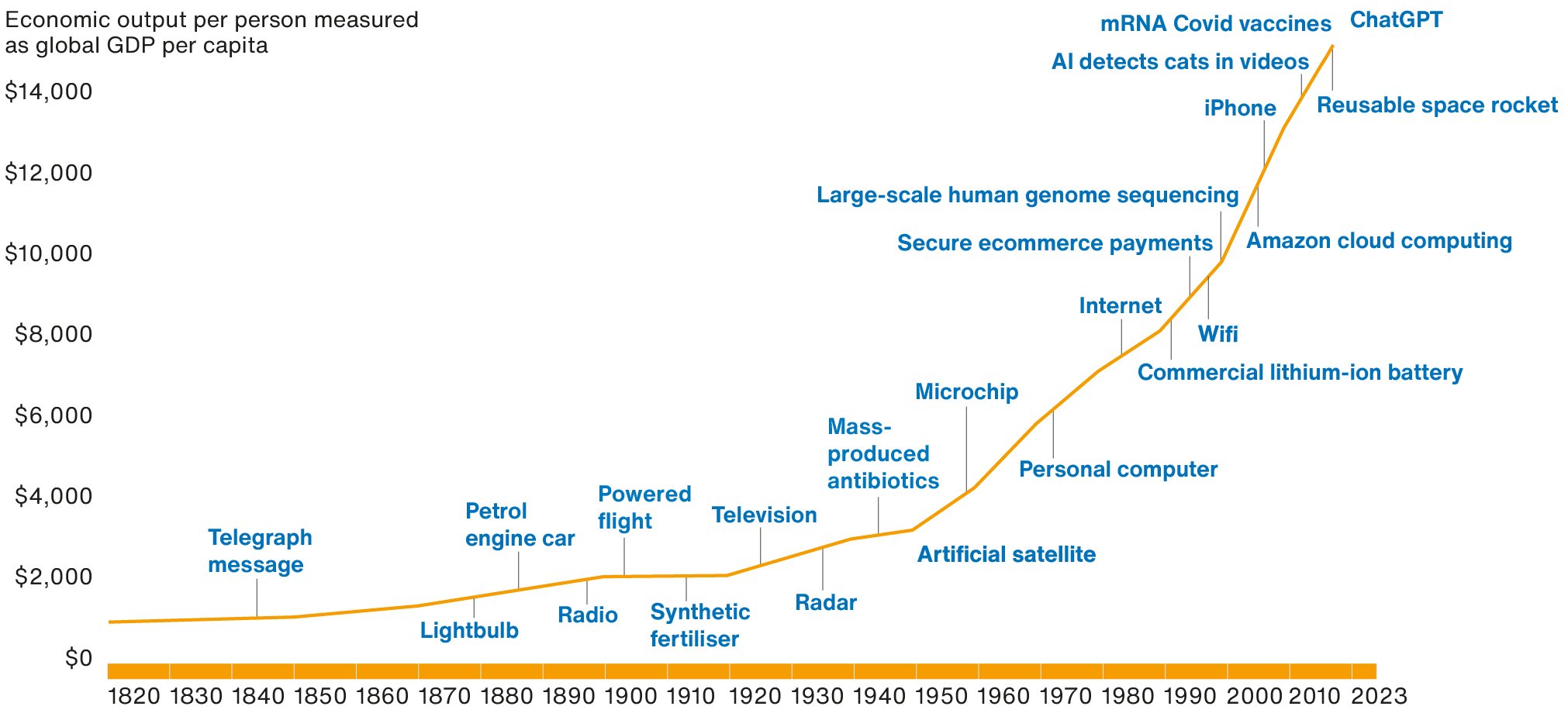
Global gross domestic product (GDP) per capita adjusted for inflation and differences in costs of living between countries. Data shown in US dollars at 2011 prices.
Sources: Our World In Data, Maddison Project Database 2020 (Bolt and van Zanden, 2020).
1844: Samuel Morse demonstrates the telegraph by sending the message “what hath God wrought” in code.
1879: Thomas Edison creates an incandescent carbon filament electric light bulb in his New Jersey lab.
1886: Carl Benz reveals the first car powered by a gasoline engine to the public and applies for a patent.
1897: Guglielmo Marconi sends the radio message, “can you hear me”, across the Bristol Channel, which his colleagues receive.
1903: In North Carolina, brothers Wilbur and Orville Wright achieve the first sustained flight of a powered aircraft.
1913: BASF starts making fertiliser at a German factory using the Haber-Bosch process, which combines nitrogen and hydrogen, helping farmers to increase crop yields.
1926: John Logie Baird gives the world’s first public demonstration of television in London.
1935: Sir Robert Watson-Watt demonstrates a radar-based system for detecting aircraft to the UK’s Air Ministry.
1944: Pfizer begins large-scale penicillin production in the US, making it the first mass-made antibiotic.
1957: Russia launches Sputnik into orbit, Earth’s first artificial satellite
1958: Texas Instruments engineer Jack Kilby creates the first integrated circuit, which becomes better known as the microchip.
1971: John Blankenbaker builds the Kenbak-1, which many historians later recognise as the first personal computer.
1983: The internet gets established thanks to the creation of the Transfer Control Protocol/Internetwork Protocol (TCP/IP), which gives different computer networks a standard way to communicate.
1991: Sony releases the first commercial lithium-ion battery to power its Handycam video recorder.
1994: Amazon, Pizza Hut and others debut secure ecommerce payment systems, giving customers the confidence to shop online.
1997: Wifi’s launch is marked by the release of the 802.11 protocol, providing wireless data transfer speeds of up to two megabits per second.
1999: The Human Genome Project declares the start of full-scale human genome sequencing after scientists decipher the DNA code of a human chromosome.
2006: Amazon launches its cloud computing business with Elastic Compute Cloud (EC2), which lets customers run their applications remotely on its hardware.
2007: Steve Jobs unveils Apple’s first iPhone and puts it on sale the same year, paving the way to the mass adoption of smartphones.
2012: Scientists at Google train a neural network to recognise when cats appear in YouTube clips, leading to the widespread use of AI to analyse video.
2017: SpaceX launches a ‘pre-flown’ booster – a nine-engine rocket base – into space, allowing the firm to reuse the most expensive parts of its Falcon 9 rockets.
2020: Moderna and Pfizer-BioNTech release Covid-19 vaccines based on messenger ribonucleic acid (mRNA) technology.
2022: OpenAI launches ChatGPT, sparking widespread use of its generative artificial intelligence chatbot, which can respond to a wide range of text-based queries.
About the author - Tom Slater
Manager, Scottish Mortgage
Tom Slater is manager of Scottish Mortgage. He joined Baillie Gifford in 2000 and became a partner of the firm in 2012. Tom joined the Scottish Mortgage team as deputy manager in 2009, before assuming the role of Manager in 2015. Beyond that, he is the head of the US Equities team and a member of another long-term growth equity strategy. During his time at Baillie Gifford, Tom has also worked in the Developed Asia and UK Equity teams. Tom’s investment interest is focused on high-growth companies both in listed equity markets and as an investor in private companies. He graduated BSc in Computer Science with Mathematics from the University of Edinburgh in 2000.
Important information
This communication was produced and approved at the time stated and may not have been updated subsequently. It represents views held at the time of production and may not reflect current thinking.
This content does not constitute, and is not subject to the protections afforded to, independent research. Baillie Gifford and its staff may have dealt in the investments concerned. The views expressed are not statements of fact and should not be considered as advice or a recommendation to buy, sell or hold a particular investment.
Baillie Gifford & Co and Baillie Gifford & Co Limited are authorised and regulated by the Financial Conduct Authority (FCA). The investment trusts managed by Baillie Gifford & Co Limited are listed on the London Stock Exchange and are not authorised or regulated by the FCA.
A Key Information Document is available by visiting our Documents page.
Any images used in this content are for illustrative purposes only.

